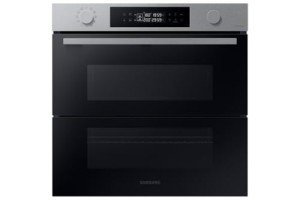20 Inspiring Quotes About Intergrated Oven And Hob
The Rise of Integrated Ovens and Hobs: An In-Depth Look
In today's fast-paced world, home cooking has undergone a considerable improvement. One innovation that has profoundly impacted kitchen design and functionality is the integrated oven and hob, which combines both cooking appliances into a single, cohesive system. This post explores the benefits, types, installation considerations, and essential functions of integrated ovens and hobs, along with offering guidelines for customers considering an upgrade.
What is an Integrated Oven and Hob?
An integrated oven and hob is a kitchen device that integrates an oven and a cooking surface area (the hob) into one unit, typically developed to be built into the kitchen cabinets. This style provides a streamlined, modern visual and optimizes kitchen area, while also providing functionality for cooking and baking. As the preferences for open-plan living continue to increase, integrated systems develop a streamlined look which mixes perfectly with kitchen furnishings.
Key Advantages of Integrated Ovens and Hobs
- Space-Saving Design: Integrated systems are best for smaller kitchens, permitting property owners to utilize offered space successfully without jeopardizing on performance.
- Aesthetic Appeal: With their structured look, these appliances create a modern and cohesive kitchen design, eliminating the requirement for standalone units.
- Reduce of Use: Integrated ovens and hobs generally include user-friendly interfaces and controls, making them accessible for cooks of all skill levels.
- Improved Safety: Many integrated systems include safety systems, such as kid locks or automatic shut-off functions, which can boost security throughout cooking.
- Energy Efficiency: Integrated appliances frequently boast enhanced energy efficiency, minimizing electricity expenses and environmental impact.
Kinds Of Integrated Ovens and Hobs
Integrated ovens and hobs are offered in various configurations to accommodate various cooking needs and choices. Below are some popular types:
Type
Description
Single Oven + Hob
A standalone oven with a built-in hob on top; perfect for compact kitchens.
Double Oven + Hob
Uses 2 ovens for increased cooking capacity, coupled with an integrated hob.
Steam Oven + Hob
Combines standard cooking with steam functionality, improving food tastes and nutrients.
Induction Hob + Oven
Functions an induction hob, offering quick heating and energy performance.
Gas Hob + Oven
Combines the responsiveness of gas cooking with an electric or standard oven.
Installation Considerations
When including an integrated oven and hob into a kitchen remodel or new build, a number of factors require to be considered:
- Space Requirements: Ensure that there is sufficient space for the combined unit which it meets regional structure guidelines.
- Ventilation: Adequate ventilation is important, particularly for gas systems, to prevent accumulation of hazardous gases.
- Power Source: Determine the appropriate source of power (electric, gas, or dual-fuel) and make sure that the kitchen has the necessary connections in location.
- Design and Finish: Choose a style and surface that complements the total style of the kitchen. Stainless steel, black, and white are popular finishes.
- Professional Installation: It is advisable to work with a qualified technician for setup, especially for gas systems, to ensure security and compliance with building regulations.
Essential Features to Look For
Consumers ought to consider various functions when picking an integrated oven and hob:
- Self-Cleaning Options: Many modern-day ovens featured self-cleaning functions, making upkeep simpler and more effective.
- Smart Technology: Some integrated models use smart functions such as remote control, cooking guides, and notifications.
- Multi-Cooking Functions: Look for ovens that enable various cooking techniques (bake, broil, steam, and so on).
- Security Features: Ensure that the unit consists of safety features such as an automobile shut-off, heat signs, and protected lock systems.
- User-Friendly Controls: Intuitive touch controls or knobs can boost the cooking experience.
Regularly Asked Questions (FAQs)
1. Are integrated ovens and hobs more energy-efficient than standalone systems?
Yes, integrated ovens and hobs are frequently developed to be more energy-efficient, making them a sensible choice for the environmentally-conscious customer.
2. Can built in oven and hob packages set up an integrated oven and hob myself?
While it is possible for knowledgeable DIY enthusiasts, it is typically recommended to have actually a qualified technician perform the setup, particularly for gas appliances, to make sure security and compliance with guidelines.
3. Do integrated units have the very same cooking capacity as standalone appliances?
Yes, lots of integrated designs are created to match or go beyond the cooking capabilities of standalone systems, using adequate area for various cooking needs.
4. What is the lifespan of an integrated oven and hob?
With correct care and upkeep, integrated ovens and hobs can last anywhere from 10 to 15 years or more.
5. Exist any brand names that specialize in integrated ovens and hobs?
Yes, several respectable brands, such as Bosch, Neff, Smeg, and AEG, use a broad variety of integrated ovens and hobs that accommodate different budgets and preferences.
The integrated oven and hob represent a significant development in kitchen technology, combining style, performance, and effectiveness into a single device. As families continue to embrace contemporary cooking approaches and aesthetic appeals, these systems will likely acquire much more popularity. Consumers must consider their cooking routines, kitchen designs, and individual choices when picking the best integrated unit, guaranteeing they take pleasure in the many advantages of these ingenious appliances for many years to come.
By comprehending the different types, installation considerations, and necessary features of integrated ovens and hobs, house owners can make educated choices as they purchase their culinary spaces.
